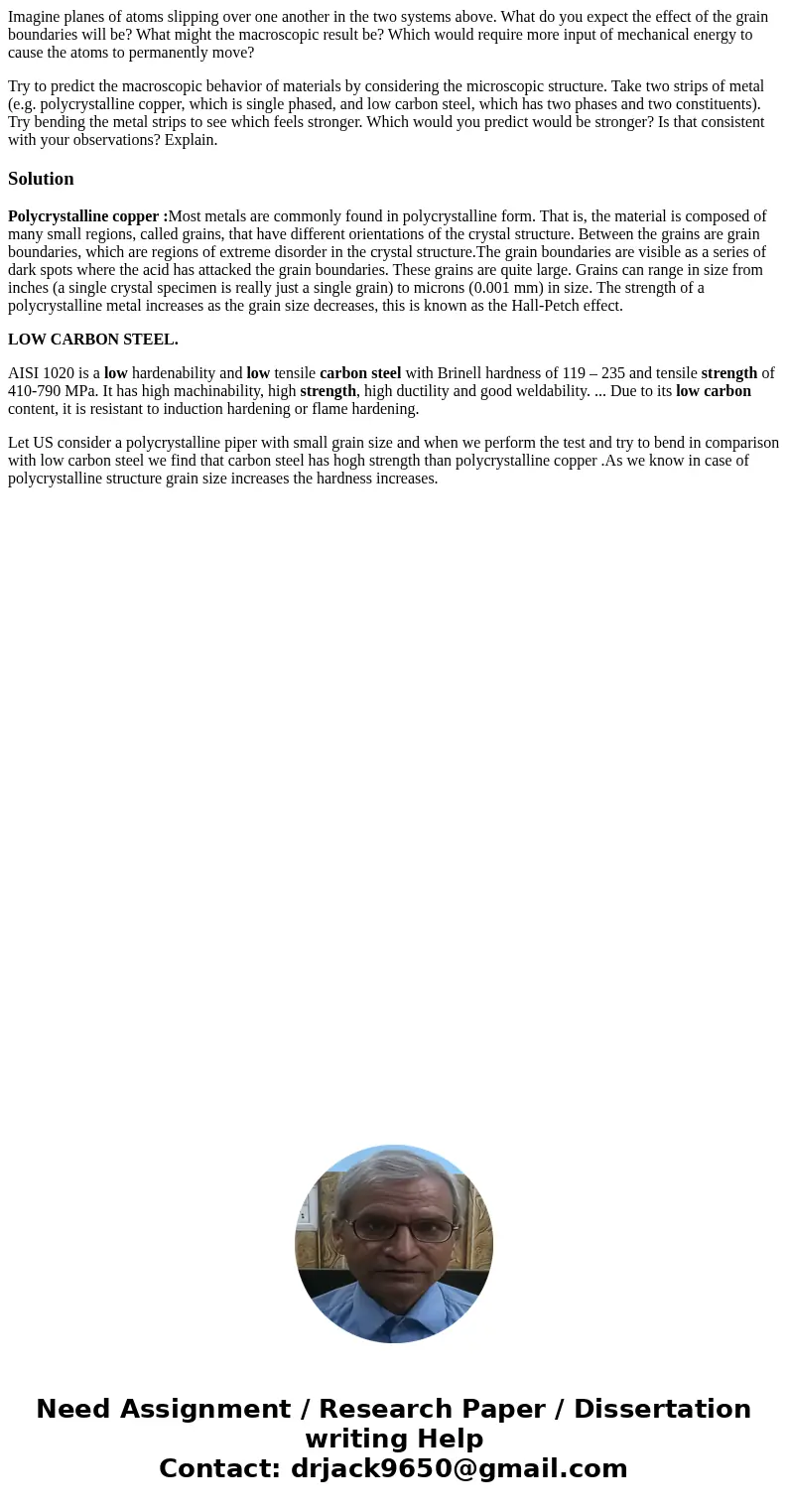Imagine planes of atoms slipping over one another in the two
Imagine planes of atoms slipping over one another in the two systems above. What do you expect the effect of the grain boundaries will be? What might the macroscopic result be? Which would require more input of mechanical energy to cause the atoms to permanently move?
Try to predict the macroscopic behavior of materials by considering the microscopic structure. Take two strips of metal (e.g. polycrystalline copper, which is single phased, and low carbon steel, which has two phases and two constituents). Try bending the metal strips to see which feels stronger. Which would you predict would be stronger? Is that consistent with your observations? Explain.
Solution
Polycrystalline copper :Most metals are commonly found in polycrystalline form. That is, the material is composed of many small regions, called grains, that have different orientations of the crystal structure. Between the grains are grain boundaries, which are regions of extreme disorder in the crystal structure.The grain boundaries are visible as a series of dark spots where the acid has attacked the grain boundaries. These grains are quite large. Grains can range in size from inches (a single crystal specimen is really just a single grain) to microns (0.001 mm) in size. The strength of a polycrystalline metal increases as the grain size decreases, this is known as the Hall-Petch effect.
LOW CARBON STEEL.
AISI 1020 is a low hardenability and low tensile carbon steel with Brinell hardness of 119 – 235 and tensile strength of 410-790 MPa. It has high machinability, high strength, high ductility and good weldability. ... Due to its low carbon content, it is resistant to induction hardening or flame hardening.
Let US consider a polycrystalline piper with small grain size and when we perform the test and try to bend in comparison with low carbon steel we find that carbon steel has hogh strength than polycrystalline copper .As we know in case of polycrystalline structure grain size increases the hardness increases.

 Homework Sourse
Homework Sourse